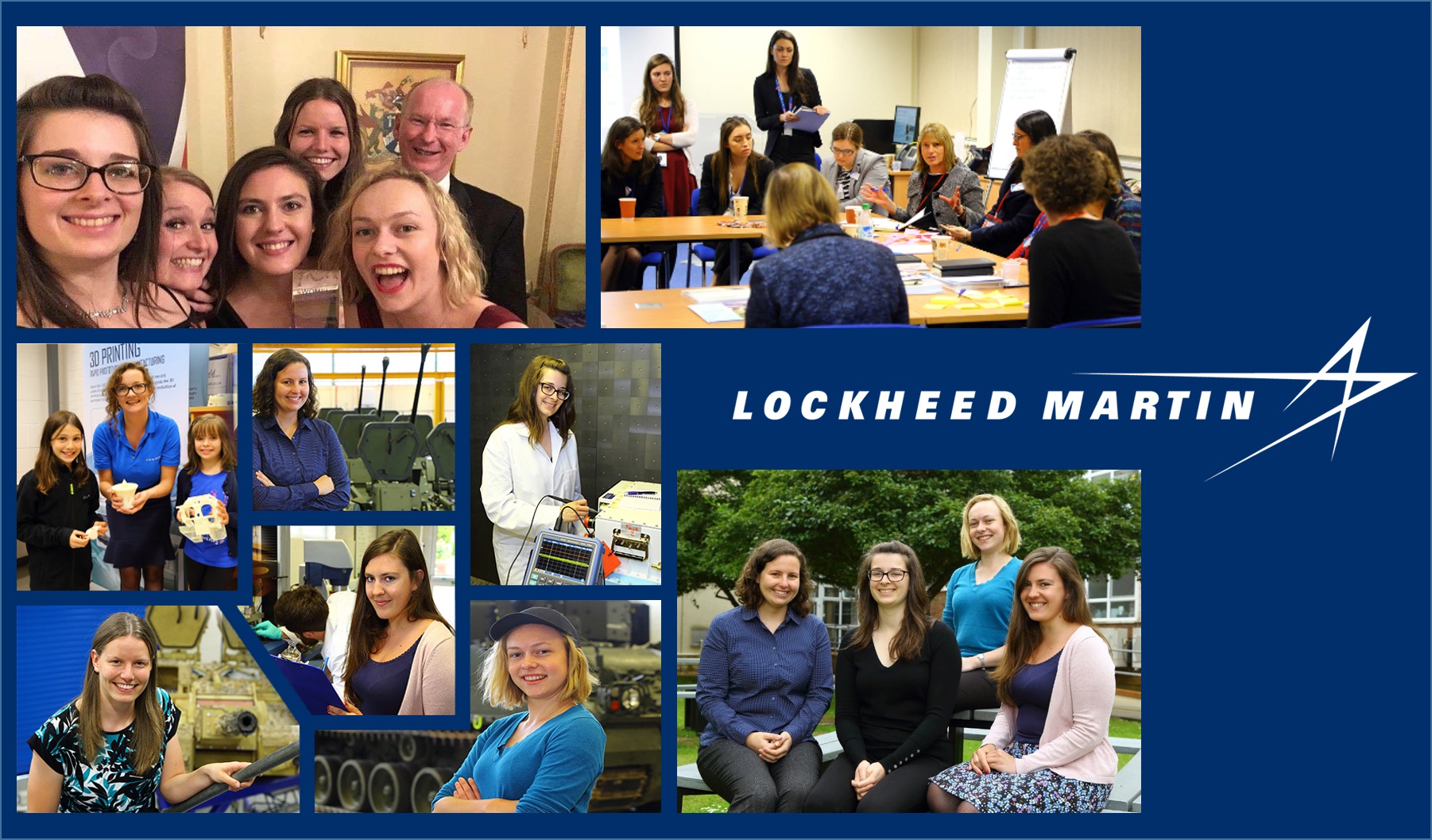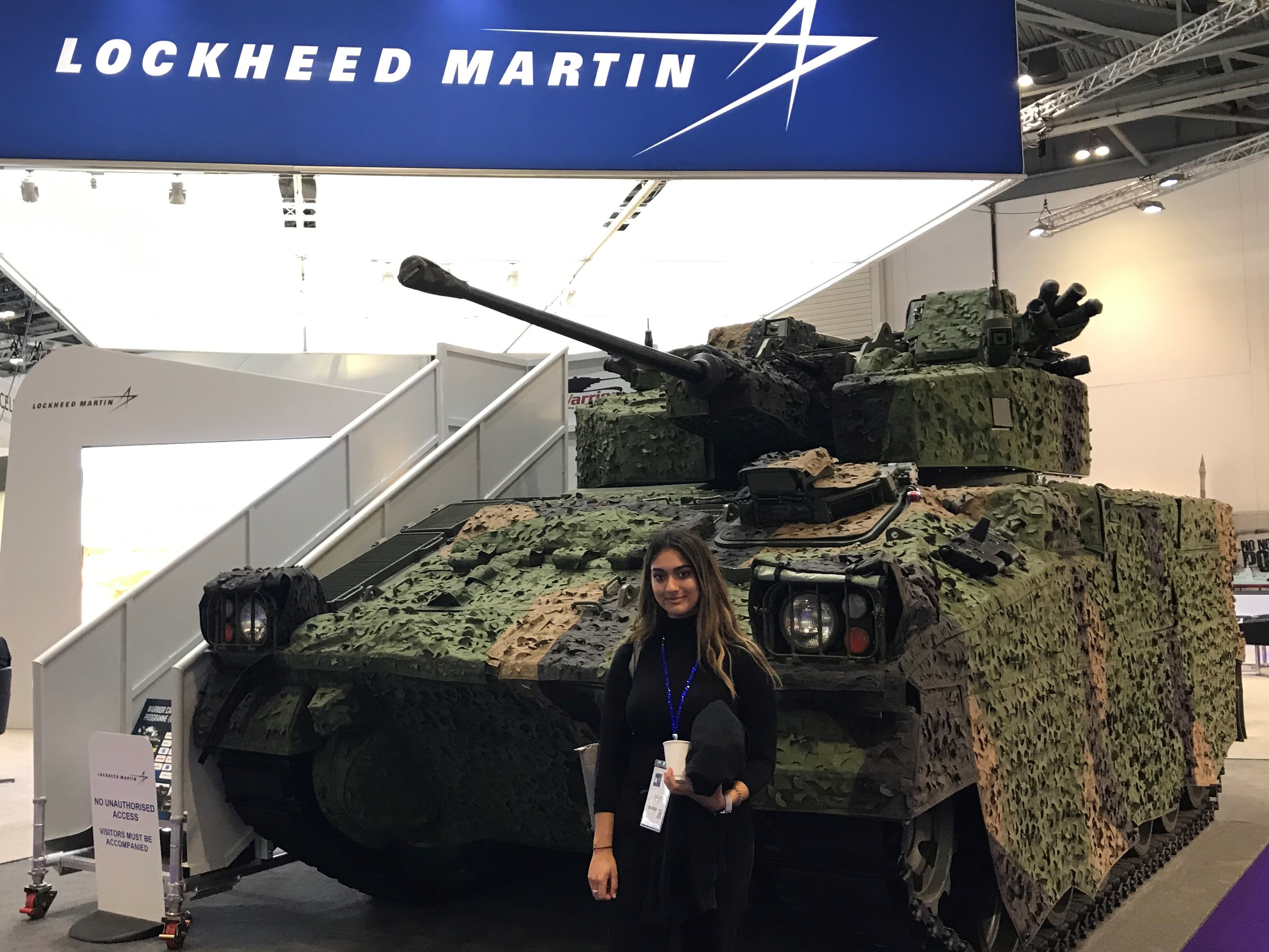United Kingdom News
As an engineer you are always improving the world around you and making it a better and safer place.
This year’s International Women in Engineering Day is all about celebrating women engineers who shape the world – and at Lockheed Martin we have plenty of them!
In 1942, Mary Golda Ross was a trailblazer - the first female engineer at Lockheed Martin. Today, many thousands of women at Lockheed Martin continue Mary’s legacy as engineers, scientists and mathematicians. However, engineering still remains a male-dominated profession, with 2018 figures from Engineering UK showing just 12.7 per cent of engineers in the UK are female.
Lockheed Martin UK is committed to finding the best engineering talent, regardless of gender.

Our Women in STEM committee get involved in a wide range of educational and industry events
Our partnerships in STEM (Science, Technology, Engineering and Maths) education in the UK help us inspire the next generation of engineers, technicians and even astronauts. A Women in STEM Committee operates from our engineering and manufacturing site in Ampthill, Bedfordshire. Members visit schools and careers fairs to talk to young women about STEM career and the range of engineering jobs available.
The company’s outreach programme for schools includes an Engineering Challenge, a Rocketry Challenge and codebreaking trial Code Quest. The company also sponsors the TechnoZone at the Royal International Air Tattoo. In 2019 our TechnoZone exhibits inspired a younger audience with the story of the Lockheed Martin F-35 aircraft and our involvement in NASA’s Mars missions.
Women in Engineering – two perspectives from Lockheed Martin professionals
To mark International Women In Engineering Day 2020, we spoke to two female engineers at Lockheed Martin UK – Samantha Waters, at the start of her career, and mid-career engineer Catherine Norris - about their passion for engineering, their experiences of being a female engineer, and how their work helps shape the world of today and of the future.
Samantha Waters

Samantha Waters is a quality engineering intern at Lockheed Martin
How did you first get into engineering?
I attended Kimberley Sixth Form College in Stewartby, Bedfordshire - a nationally recognised specialist STEM College. At Kimberley I realised engineering was a vast industry at the heart of innovation. It’s also where I first heard Lockheed Martin was a local employer.
I decided to study for a BEng Aerospace Engineering degree at the University of Hertfordshire. It’s a sandwich course, with one year working in industry, which I’m spending at Lockheed Martin. I return to university in September for the final year of my degree.
Why are you passionate about engineering?
Engineering is at the forefront of everything and enables all industries to do what they do. From a printer to a heart scanner – it all involves engineering. I find aerospace inspiring, particularly space exploration. At Kimberley College I completed an EPQ (Extended Project Qualification) on the environmental impact of spacecraft. Today’s space pioneers are seeking their place in history – it’s incredible!
What does a typical day in your job as a quality engineer at Lockheed Martin involve?
Quality engineering is the make or break hurdle as to whether a product gets out of the door. I’m currently working in Internal Designs as part of the Scout Specialist Vehicle Programme located at Lockheed Martin Ampthill. Every day involves a lot of problem solving and process improvements. I liaise with lots of teams and functions to get the job done right first time.
What is it like working in a traditionally male-dominated field and environment?
You need to be able to push back and stand your ground. You need to remember you were employed for your skillset, not because of your gender, and it’s not a gender battle. I find a female engineer can often add a fresh perspective on a problem.
How does what you do help #ShapeTheWorld?
Quality is fundamentally about safety, ensuring risks are evaluated and every product is produced to a consistent standard. So, by contributing to quality standards I help to make the world a safer place. I’m also involved in outreach, including careers days, meaning I get to inspire a new generation of engineers, which I think is hugely important for the future.
Why should girls/women consider a career in engineering? What would you say to someone thinking about it?
It is so rewarding and challenging. It may be male dominated, numbers wise, but it’s not a place where a woman can’t put her ideas forward. It’s not all about maths and electronics; we need creative, artistic, sporty, scientific and all ranges of people. You get to experience once in a lifetime opportunities.
What might your future career look like?
I plan to finish my Aerospace degree, return to Lockheed Martin and continue to build my knowledge and continue making a difference. You’re not limited to a certain product and type of engineering at Lockheed. There’s a huge amount of opportunity, given the breadth of history and capability in the company. I’m very inspired by Lockheed Martin’s Marillyn Hewson, who recently stood down as CEO to become Executive Chairman of the Board.
Catherine Norris

Catherine Norris, right, speaks to students at a recent Lockheed Martin Space Day event
How did you first get into engineering?
I was always keen on Maths and Science and for years I wanted to be a doctor. I did a GCSE in Design and Technology which involved a group project designing and building a Go-Kart. I loved it, but didn’t relate it to possible career options. My Physics A-Level teacher was the first person to suggest engineering. I attended a residential course at Birmingham University for girls interested in engineering. About 18 months later I embarked on an engineering degree.
Why are you passionate about engineering?
There is something very satisfying about seeing a product in use and thinking ‘I helped design / procure / plan / develop / test that’. I worked for Transport for London before joining Lockheed Martin. I never lost the satisfaction of seeing London Underground being used by so many people and knowing I had played a part in it.
What does a typical day in your job as a project engineer at Lockheed Martin involve?
I work in the Engineering Excellence team, helping to improve engineering across Lockheed Martin Ampthill. All days are different, but they might include meeting with engineers to understand the practices they use and consider how they can be improved, creating and writing processes and documentation, putting together and providing communications and training material.
What is it like working in a traditionally male-dominated field and environment?
It is certainly not something that has ever bothered me. At school I took male-dominated subjects so I guess I got used to it early on. Every team I have worked in has always made me feel welcome and no different for being female.
How does what you do help #ShapeTheWorld?
As an engineer you are always improving the world around you and making it a better and safer place. As a Railway Systems Engineer I was part of delivering new, faster, more frequent services on the Underground network. In my current role the improved processes and ways of working enable others to deliver safe and innovative solutions to our customers.
Why should girls/women consider a career in engineering? What would you say to someone thinking about it?
Go for it! If you have an interest in science and technology, enjoy problem solving and want to help make the world a better place, it is a great career choice. There’s a wide range of opportunities available – my roles have ranged from hands-on maintenance and testing, to operational planning, systems engineering, and leadership.
What might your future career look like?
I recently read a couple of interesting articles about ‘lattice’ careers - the idea that moving forward can also involve moving laterally, diagonally and down. Each role provides opportunities and development, while fitting to the person you are at the time both as a professional and in your personal life.
My career has followed this model. I took the traditional career ladder during my twenties and early thirties. I then made a conscious decision to identify roles in which I could still develop but allowed me to spend more time with my young children. Engineering proved to be an excellent career choice in this respect.
I can definitely see myself staying at Lockheed in the longer term. In time, I’d be interested in a role where I could apply more of my previous systems and leadership experience.
In your experience, what has changed for women in engineering since you started out in your career?
While I have never minded working in a male-dominated field, there was certainly a need for a thicker skin 25 years ago. The terms ‘love’ and ‘dear’ were used regularly and the sight of ‘page 3’ style pictures was commonplace in workshops and hangars. Thankfully this has now changed, along with the introduction of more flexible and family friendly working practices and a general acceptance of females in engineering. It is an easier place to be than it was. However, there is still more work to be done. It is not unusual for people to assume I am in a non-engineering role, even though I am part of an engineering team.
In terms of numbers, sadly not much has changed. The majority of the women I started my career with have moved on from engineering. Hopefully this will change for the next generation coming through. It’s not just about encouraging women into engineering - it’s also about keeping them.

